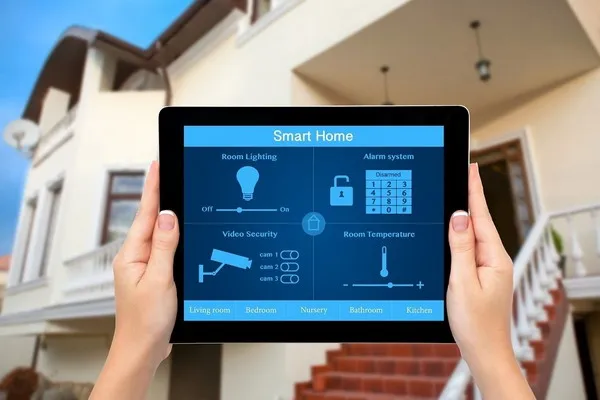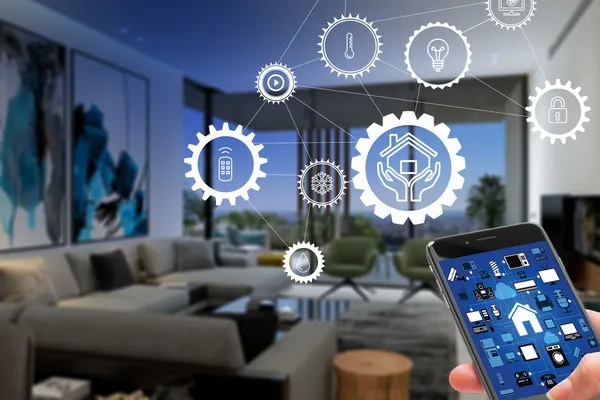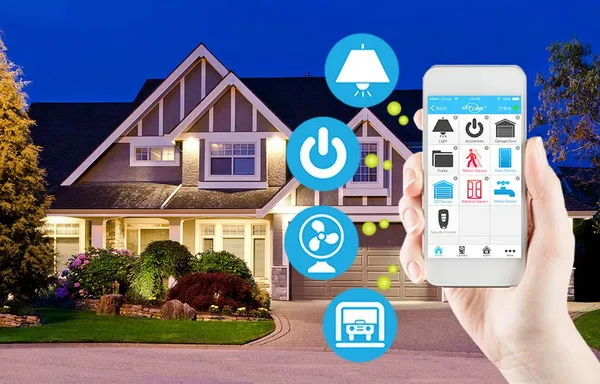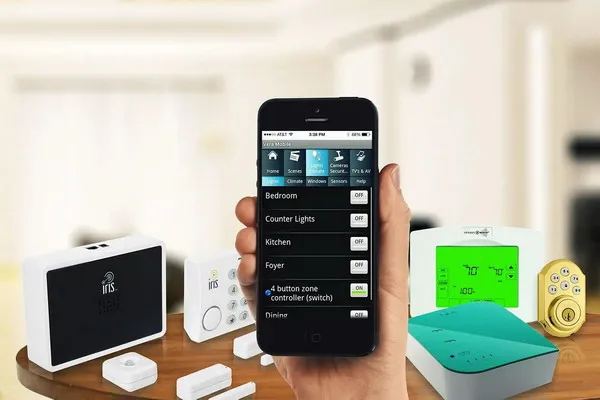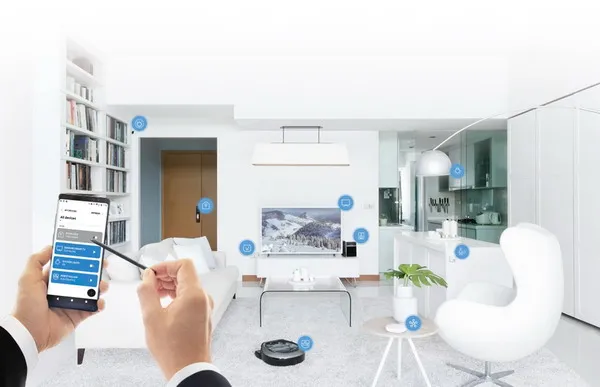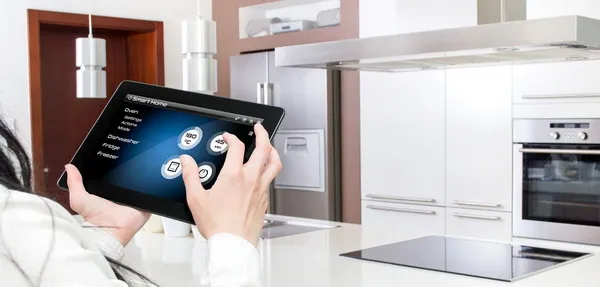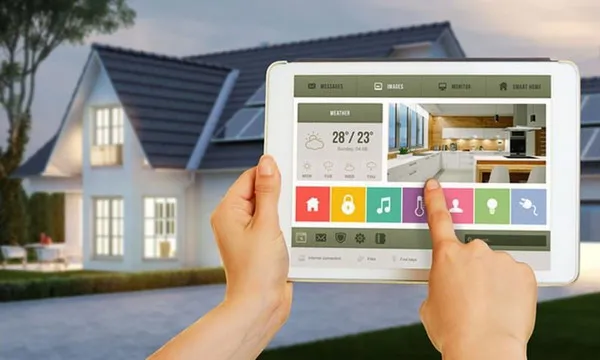As we approach 2026, smart home automation is set to revolutionize our living spaces in unprecedented ways. What once seemed like science fiction is now becoming a reality, with intelligent systems transforming how we interact with our homes. This article explores the current state of smart home technology, the advancements leading up to 2026, key trends to watch out for, popular devices, the role of AI and machine learning, challenges, and future prospects in this rapidly evolving field.
Current State of Smart Home Automation
Smart home technology has already made significant strides by 2024. Today, homes are equipped with a variety of devices designed to enhance convenience, security, and efficiency. Smart speakers like Amazon Echo and Google Home have become household staples, allowing users to control various functions with simple voice commands. Smart thermostats such as Nest and Ecobee provide energy savings by learning user preferences and adjusting temperatures automatically. Security systems, including Ring and Arlo, offer peace of mind with real-time monitoring and alerts.
Consumer adoption rates for smart home devices have been steadily increasing, driven by the promise of improved convenience and energy savings. The market trends indicate a growing preference for integrated systems that can be managed through a single platform, making it easier for users to control their homes with minimal effort.
Technological Advancements Leading to 2026
Several technological advancements are set to shape the future of smart home automation by 2026. Key among these are developments in artificial intelligence (AI) and machine learning, the Internet of Things (IoT), and the rollout of 5G technology.
AI and Machine Learning: These technologies are crucial in enhancing the capabilities of smart home devices. AI enables devices to learn from user behavior, making them more responsive and personalized. For instance, AI-powered assistants can anticipate needs and provide suggestions, such as adjusting lighting based on the time of day or suggesting recipes based on available ingredients.
Internet of Things (IoT): IoT continues to expand, connecting more devices and allowing them to communicate seamlessly. This interconnectedness ensures that all smart home devices work in harmony, providing a cohesive user experience. IoT platforms enable centralized control, making it possible to manage lighting, security, heating, and entertainment systems from a single app or device.
5G Connectivity: The advent of 5G technology is set to enhance the performance of smart home systems significantly. With faster and more reliable internet connections, devices can communicate more quickly and efficiently, reducing latency and improving real-time responses. This will be particularly beneficial for security systems and other critical applications where speed and reliability are paramount.
Key Trends in Smart Home Automation for 2026
As we look ahead to 2026, several key trends are expected to dominate the smart home automation landscape:
Increased Integration and Interoperability: One of the main trends is the push towards greater integration and interoperability among smart home devices. Companies are working towards creating ecosystems where devices from different manufacturers can seamlessly interact. This will simplify the user experience and allow for more comprehensive home automation solutions.
Enhanced Security Features: With the increasing number of connected devices, security remains a top priority. Advanced encryption and security protocols are being developed to protect user data and prevent unauthorized access. Biometric authentication, such as fingerprint and facial recognition, will become more prevalent, providing an additional layer of security.
Sustainability and Energy Efficiency: Smart home technology is also focusing on sustainability and energy efficiency. Smart energy management systems can optimize energy usage, reducing waste and lowering utility bills. Integration with renewable energy sources, such as solar panels, will become more common, allowing homes to generate and manage their own power.
Personalization and Customization: AI-driven personalization will enable homes to adapt to the specific needs and preferences of their occupants. Customizable routines and settings will allow users to create tailored environments, enhancing comfort and convenience. For example, smart lighting systems can adjust color and brightness based on individual preferences and daily routines.
Popular Smart Home Devices in 2026
By 2026, several smart home devices are expected to become even more popular and widespread:
Smart Speakers and Virtual Assistants: Devices like Amazon Echo, Google Home, and Apple’s HomePod will continue to dominate the market, providing central hubs for controlling other smart devices and accessing information.
Smart Lighting and Climate Control Systems: Innovations in smart lighting, such as Philips Hue and LIFX, will offer more advanced features, including dynamic color changes and automated schedules. Smart thermostats will become more intuitive, adjusting settings based on real-time weather data and user habits.
Smart Security Cameras and Alarm Systems: Enhanced security systems, including cameras with AI-powered threat detection and smart alarms, will provide comprehensive protection for homes. These systems will be able to differentiate between normal activity and potential threats, reducing false alarms and improving response times.
Smart Kitchen Appliances and Home Automation Hubs: Kitchens will see a surge in smart appliances, such as refrigerators that monitor food inventory and suggest recipes, and ovens that can be controlled remotely. Home automation hubs will integrate these devices, allowing for streamlined control and monitoring.
The Role of AI and Machine Learning
AI and machine learning are at the forefront of smart home innovation, driving advancements that make homes more intelligent and responsive. These technologies enable predictive analytics, which can optimize energy usage and enhance security. For example, AI-powered thermostats can predict when users are likely to be home and adjust temperatures accordingly, leading to energy savings.
In terms of security, AI-based systems can analyze patterns and detect anomalies, providing real-time alerts for unusual activities. Machine learning algorithms can also improve over time, becoming more accurate and reliable in identifying potential threats.
Personalization is another significant benefit of AI and machine learning. These technologies can learn user preferences and create customized experiences. For instance, a smart home system can learn the preferred lighting and temperature settings for different times of the day, automatically adjusting them to suit individual needs.
Challenges and Considerations
Despite the numerous benefits, there are several challenges and considerations associated with smart home automation:
Privacy and Data Security: With more devices connected to the internet, privacy and data security are major concerns. Ensuring that user data is protected from cyber threats is critical. Manufacturers must implement robust security measures to safeguard personal information.
High Cost: The initial cost of smart home devices can be prohibitive for many consumers. While prices are expected to decrease over time, affordability remains a barrier to widespread adoption. Providing cost-effective solutions will be essential for increasing market penetration.
Compatibility and Standardization: The lack of standardization among smart home devices can lead to compatibility issues. As more devices enter the market, ensuring that they can work together seamlessly is crucial. Industry-wide standards and protocols will help address this challenge.
Future Prospects and Innovations
Looking beyond 2026, the future of smart home automation is filled with exciting possibilities. Emerging technologies, such as augmented reality (AR) and virtual reality (VR), are expected to play a significant role in enhancing smart home experiences. AR and VR can provide immersive interfaces for managing and interacting with smart home systems, offering a new level of convenience and engagement.
Advanced robotics is another area poised for growth. Robots designed for household tasks, such as cleaning and maintenance, will become more sophisticated and capable. These robots will be integrated into smart home ecosystems, providing automated solutions for everyday chores.
Additionally, the integration of smart home technology with health and wellness applications will become more prominent. Devices that monitor health metrics and provide personalized wellness recommendations will enhance the quality of life for users, especially in aging populations.
Conclusion
In conclusion, smart home automation is on the brink of a transformative era as we approach 2026. Advancements in AI, IoT, and 5G connectivity are driving the development of more integrated, secure, and personalized smart home solutions. While challenges such as privacy, cost, and compatibility remain, the potential benefits of smart home technology are vast. As we continue to innovate and overcome these obstacles, the future of intelligent living looks brighter than ever. Smart homes are set to become an integral part of our daily lives, enhancing comfort, security, and efficiency in ways we could only imagine a few years ago.

